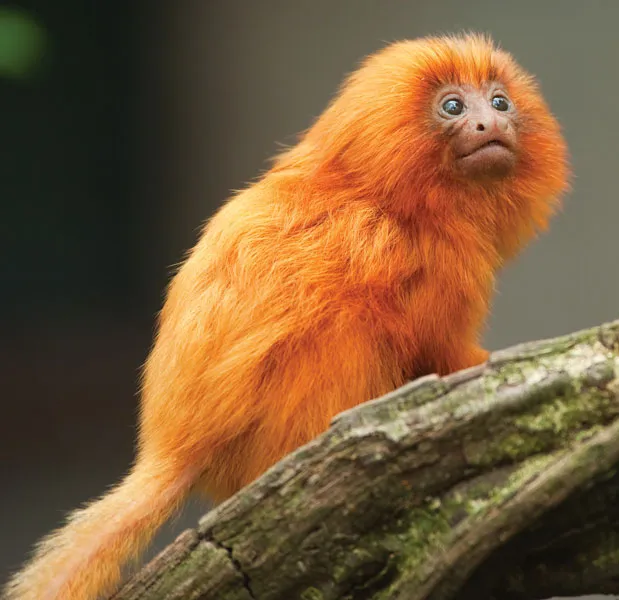Golden Marmoset Monkey, The golden marmoset monkey, also known as the golden lion tamarin (Leontopithecus rosalia), is one of the most captivating and endangered species in the world. Native to the Atlantic coastal rainforests of Brazil, this small, golden-furred primate has become a symbol of wildlife conservation and biodiversity.
Unique Appearance and Behavior
The golden marmoset monkey is easily recognizable by its striking orange-golden coat, which resembles a lion’s mane—hence the name “golden lion tamarin.” Despite their majestic appearance, these monkeys are small in size, typically weighing around 500 to 600 grams and measuring about 10 inches in body length, with a tail that adds another 12 to 15 inches.
These primates are highly social creatures, living in family groups of 2 to 8 members. They use vocalizations, scent markings, and facial expressions to communicate with one another. Golden marmosets are diurnal, meaning they are active during the day, and they spend most of their time in trees, rarely touching the ground.
Habitat and Diet
Golden marmoset monkeys inhabit the dense, tropical forests of southeastern Brazil. Their natural habitat is under serious threat due to deforestation, urbanization, and agricultural expansion. As a result, their population in the wild has declined dramatically over the past few decades.
In terms of diet, golden marmosets are omnivores. They feed on a wide variety of foods including fruits, flowers, insects, small lizards, and bird eggs. Their sharp claws and agility help them forage efficiently in the forest canopy.
Conservation Efforts
The golden marmoset monkey is currently listed as endangered by the International Union for Conservation of Nature (IUCN). Thankfully, numerous conservation programs have been implemented to protect and restore their populations. These include habitat preservation, reforestation projects, captive breeding programs, and public awareness campaigns.
One of the most successful conservation stories involves the reintroduction of captive-bred golden lion tamarins into protected forest reserves. Thanks to international cooperation and local community involvement, the population has slowly started to recover, though continued efforts are essential for their long-term survival.
Why Protect the Golden Marmoset Monkey?
Protecting the golden marmoset monkey is not just about saving a single species—it’s about preserving the rich biodiversity of the Brazilian rainforest. As a key species in their ecosystem, golden marmosets play a vital role in seed dispersal and forest regeneration. Their conservation also highlights the importance of sustainable development and environmental education.
Final Thoughts
The golden marmoset monkey is a remarkable example of nature’s beauty and complexity. With its vibrant appearance, intricate social behaviors, and vital ecological role, this tiny primate captures the hearts of scientists, conservationists, and wildlife lovers worldwide. By supporting conservation efforts, we can help ensure that future generations continue to witness the golden marmoset monkey in its natural habitat.
You Might Also Like These:


